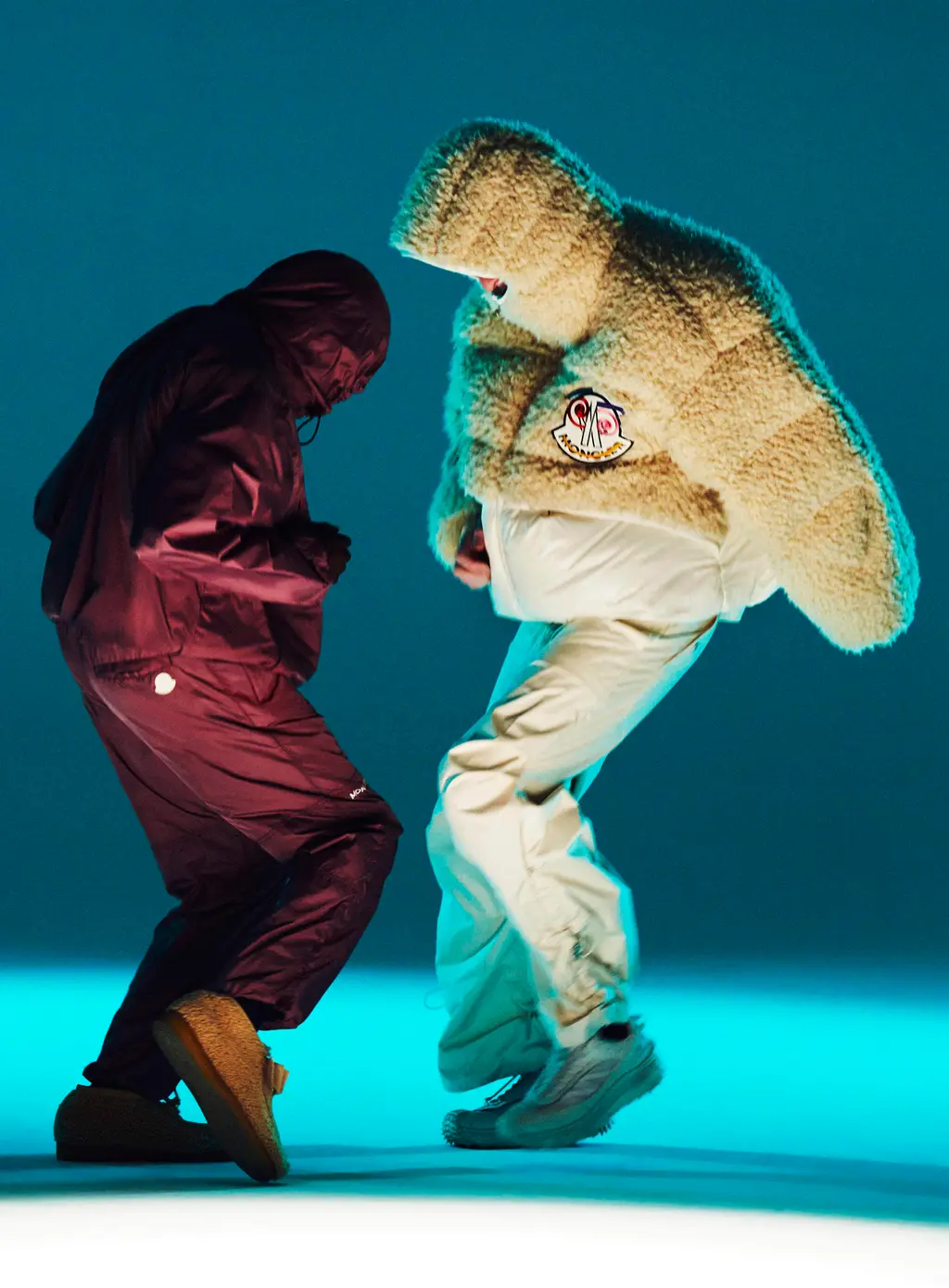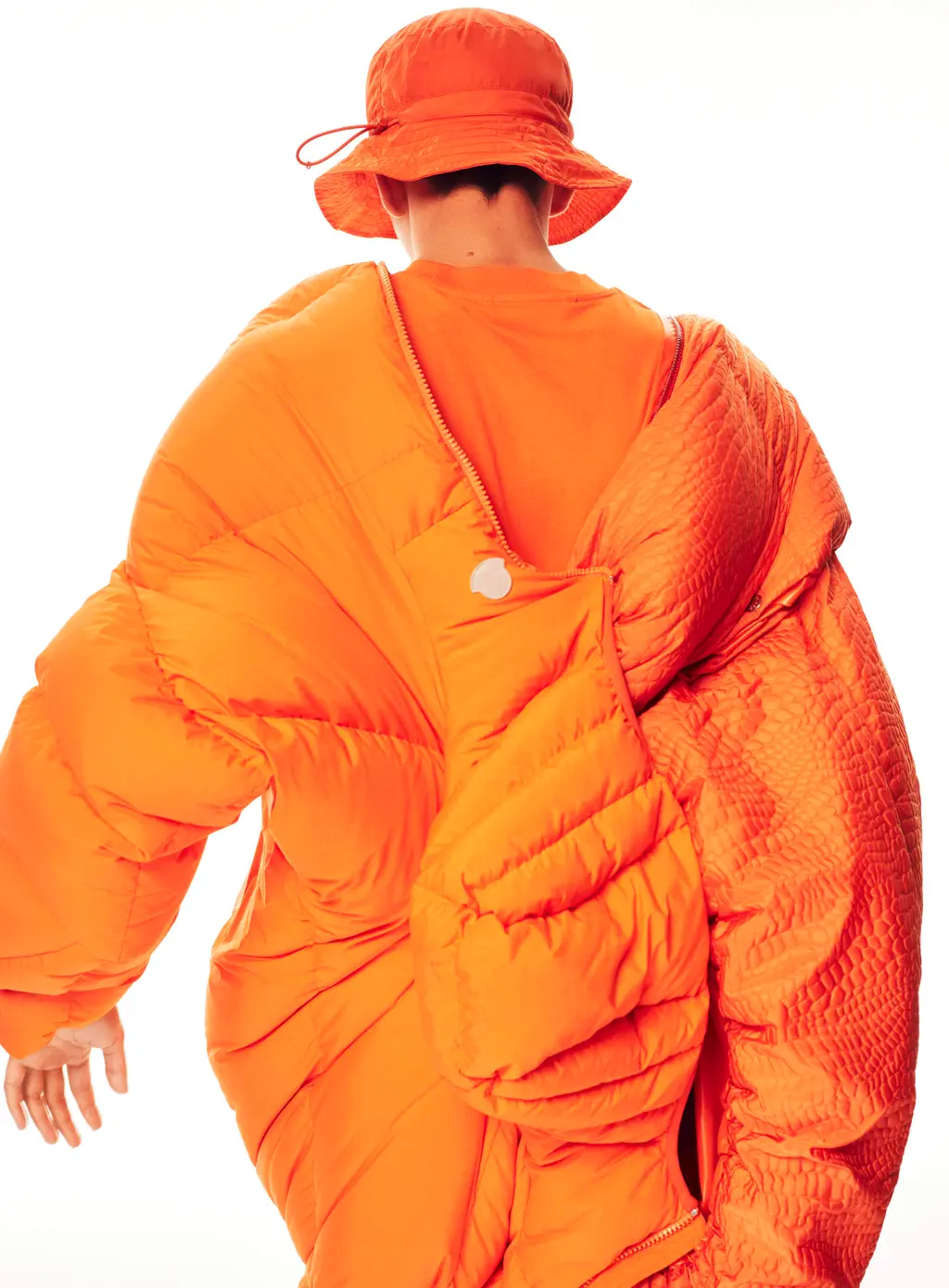Moncler hits the raves for its latest collection

Creative director Sergio Zambon remembers his hedonistic past in some of London’s most-loved (and now closed) nightlife venues for the house’s optimistic offering, titled 2 Moncler 1952 Man.
It’s an uncertain period for British nightlife, with more clubs closing than ever before. Since 2015, roughly 29 per cent of the UK’s clubs have closed, with great establishments like Madame Jojo’s, The Coronet and The Cockpit leaving a gaping hole in the capital, replaced by luxury flats, office developments and other boring, mind-numbing stuff.
For Moncler’s latest collection, released today and titled 2 Moncler 1952 Man, its creative director Sergio Zambon planted his feet firmly in the centre of some of London’s storied clubs, paying homage to the hedonistic nights he went to back in the ’90s. “I always found the club scenes, especially in London, to be a strong expression of creativity and style,” he says. “Sometimes I was in the clubs just listening to music and thinking up collections.”
Throughout history, London areas like Soho, Vauxhall and Hackney have provided safe-spaces for liberation – sexually, musically and culturally. Geniuses were born on many a dancefloor and the stories are endless. Subcultures formed, new styles emerged and the sounds suited them. From the androgynous New Romantics of the ’80s, the baggy acid housers of the early ’90s, the flashy UKG of the early ’00s and the indie bands that emerged in the following years, London’s heady nightlife wasn’t just for getting wrecked – it was a breeding ground for new ideas.



“I have fond memories of clubbing in London, in clubs like Taboo and Pink Panther,” Zambon says. The former club was opened by radically subversive, wholly outrageous performance artist Leigh Bowery in 1985 and regulars included Boy George, Steve Strange and Zambon. “Taboo was the club of Leigh Bowery and they played lots of ’70s disco.”
The all-play energy of London’s nightlife comes through in a collection rooted in the pursuit of pleasure. One for the senses, Zambon takes seriously bright hues and mashes them up throughout 15 looks, like an acid yellow anorak paired with bright green technical trousers, or an oversized orange puffer sitting alongside clashing leopard print. And like the heady days of British rave culture, fits are loose and baggy, almost replicating the youthquake styles of the early ’90s dance floor days, where trousers and T‑shirts hung loose in the middle of scorching, aircon-less clubs.
“[It’s] the mixture of very forward streetwear and the influence of music and the classics,” he says. “These contrasts and cohesions are expressed in the collection through rave silhouettes and acid colours.”
All the looks are paired with remixes of classic pieces from British brands Barbour and Clarks, who Moncler collaborated with. There’s traditional Wallabees in blood red and Barbour’s historical jacket silhouettes maximised to achingly cool effect. The pieces are styled in the same way that the ‘90s kids Zambon was researching for the collection would wear them, who also informed the trippy prints found on T‑shirts. “The hypnotic prints come from researching images of cool kids from the ’90s during raves,” he says. ”The ravers of the time.”
At the tail-end of a hedonistic summer, as most of us are (almost) ready to pack it in, take a breather and rest up ’til the next slew of parties, Zambon’s latest collection for Moncler is a salute to the good times. And a quiet reminder that, when it comes down to it, no one can party quite like the Brits.





